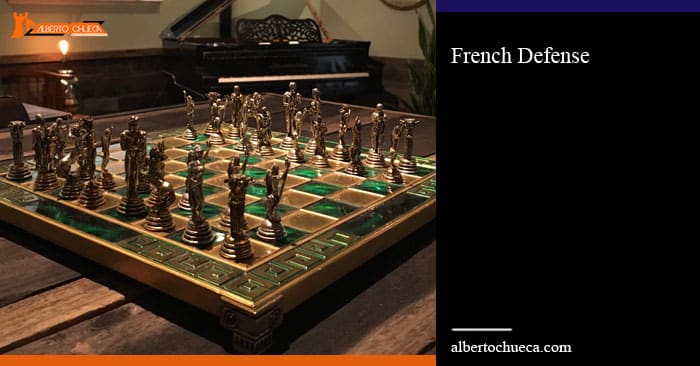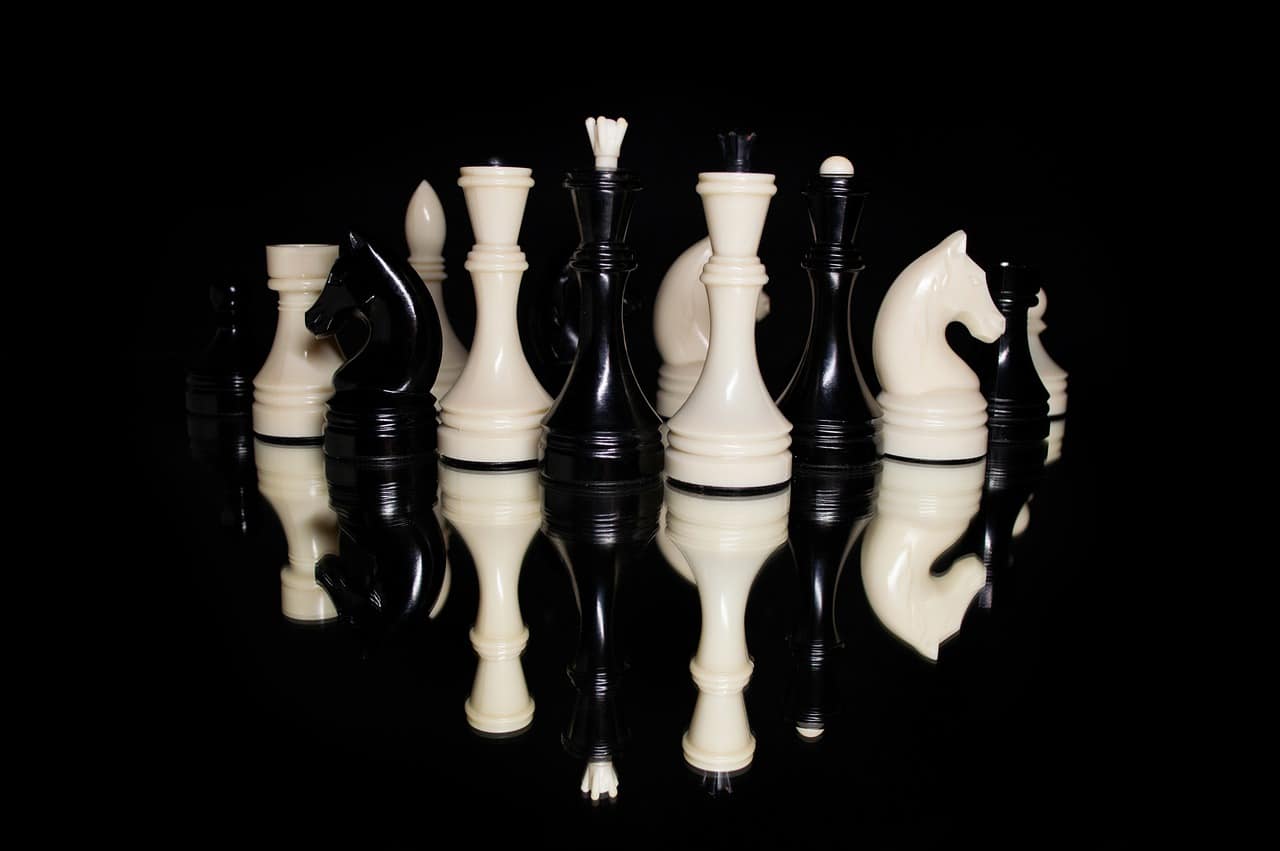Table of Contents
French Defense
French Defense is a solid, strong, and interesting defense against King’s Pawn. According to my databases, it is the third most popular line when White plays 1.e4 (only behind famous Sicilian and Double King’s Pawn).
In move 1, Black just plays e6, clearing the line to develop the dark squares, Bishop. Apparently they do not care too much about the center and space. However, in the second move, Black is going to play d5 no matter what White plays, making sure they also have a pawn in the center.
Some theory and ideas
1.e4 e6 2.d4 d5
In this position, Black is taking on e4, and White has three main options to avoid losing material:
- Advance the “e” pawn (Advance Variation)
3.e5 c5! This move is very important, attacking the central pawn on d4. White is creating a very strong chain of pawns in this line (b2, c3, d4, e5), and the second player needs to fight against it (notice that White is getting a lot of space in the Advance Variation) if they do not want to stay completely lost.
- Trade on d5 (Exchange Variation)
3.exd5 exd5 4.Nf3 Nf6
This variation is very symmetrical. Even when White always has a tempo ahead in development, in general, is not hard for Black to get a balanced game.
- Protect the “e” pawn with the Queen’s Knight (3.Nc3 or Nd2)
The most popular here is 3.Nc3, then Black can either play Winawer (3. … Bb4) with sharp and dynamic positions or Classical (3. … Nf6), with a middlegame a little more traditional. The mainline is like this:
3.Nc3 Nf6 4.Bg5 dxe4 5.Nxe4 Be7 6.Bxf6 Bxf6 and White is very slightly better.
The other option for White is 3.Nd2. It is interesting because it is avoiding Winawer, however, Black can now play other moves that were not possible (or not strong) against 3.Nc3, like c5!?:
3.Nd2 c5 (also Nf6 is fine) Black should get a balanced middlegame in these lines.
Typical Pawn Structures in French Defense
-
In Advance Variation
White: a2, b2, c3, d4, e5, f2, g2, h2
Black: a7, b7, c5, d5, e6, f7, g7, h7
White has more space in the center and an amazing chain of pawns from b2 to e5. But Black can also take advantage of this and react with some annoying breaks on c5 (attacking the middle of the chain) or f6 (attacking the top). But the break on f6 is more common in the middlegame, or at least with some pieces already developed since it is discovering a little the black King.
If Black does not attack white pawns in the center and plays passively, then the first player could start a very strong attack in the kingside, taking advantage of all the space and squares they control in the center.
-
In Exchange Variation
White: a2, b2, c2, d4, f2, g2, h2
Black: a7, b7, c7, d5, f7, g7, h7
There is a Symmetrical Center. There will be a fight to control the only open file on the board: the “e” file. Very often there are many trades on this line. That is the reason why games with this variation are so likely to finish in a draw. In general chess masters avoid these positions when they need to win the game.
Also, the squares e4 for Black and e5 for White will be very important, and both sides will try to use them with their Knights.
-
In Classical Variation
White: a2, b2, c2, d4, f2, g2, h2
Black: a7, b7, c7, e6, f7, g7, h7
In this structure, White has a slightly very center, with a little more of space (notice white central pawn on d4 is in the 4th rank as black central pawn on e6 is in the 3rd rank). Also, they have a nice square on e5 for a Knight, and the “e” file is half-open. However, Black also has some interesting things in these positions. The “d” file is half-open for them, and there are interesting break plans over c5 to fight against white central pawn.
Typical Plans for Black in French Defense
-
In Advance Variation
Prepare typical breaks over c5 early in the opening and f6 a little later (probably in middlegame). Put pressure also with pieces in White’s chain of pawns. Black’s light squares Bishop is not good in these positions because of the central pawns in light squares, so if the second player can trade it, it is going to be great almost always.
-
In Exchange Variation
Fight for the open “e” file with Rooks and control the nice square e4 with the Knight.
-
In Classical Variation
Activate pieces to prepare a break over c5 (or maybe e5 in some position) to fight against White’s central pawn. Use half-open “d” file. The Bishop on b7 controlling the Great Diagonal could be an important piece.
Typical squares for black pieces
King: In general Black castles kingside. Although castling queenside could be an option in some particular lines.
Queen: In Advance Variation it goes to b6, attacking the center and also threatening b2, so White’s dark squares bishop cannot be developed.
Rooks: The Queen’s Rook goes to the “c” file in the Advance Variation, since after c5 this file is very likely to be open at some point. In the Exchange Variation, the “e” file will be the only open file on the board. “d” and “c” files could be fine in Classical depending on how White plays.
Bishops: Dark squares Bishop is developed somewhere in the diagonal f8-a3 (remember the first move in French is clearing that line for the Bishop). However. the situation with the light squares Bishop is very different, and it is one of the main problems Black has to solve in the majority of the lines in French (it does not happen in the Exchange Variation).
This Bishop is very often developed over d7 or the Fianchetto. Black can also try to trade it for White’s Bishop over the diagonal a6-f1.
Knights: In the Advance Variation the King’s Knight can go h6-f5 or e7-f5 trying to get the interesting square f5. In Exchange Variation the path f6-e4 is very normal.








